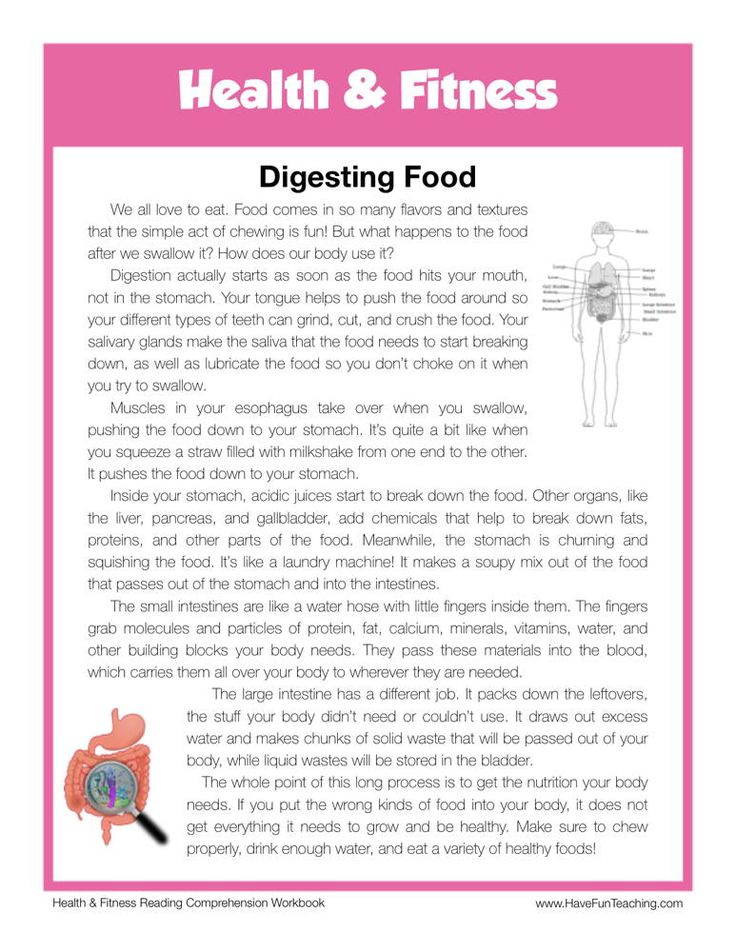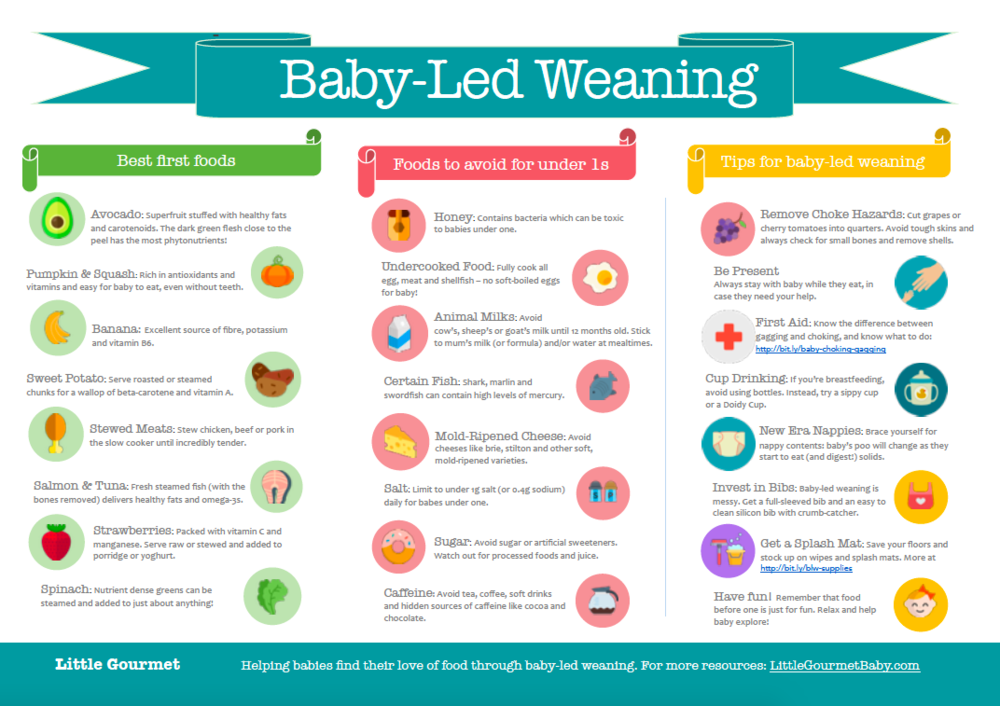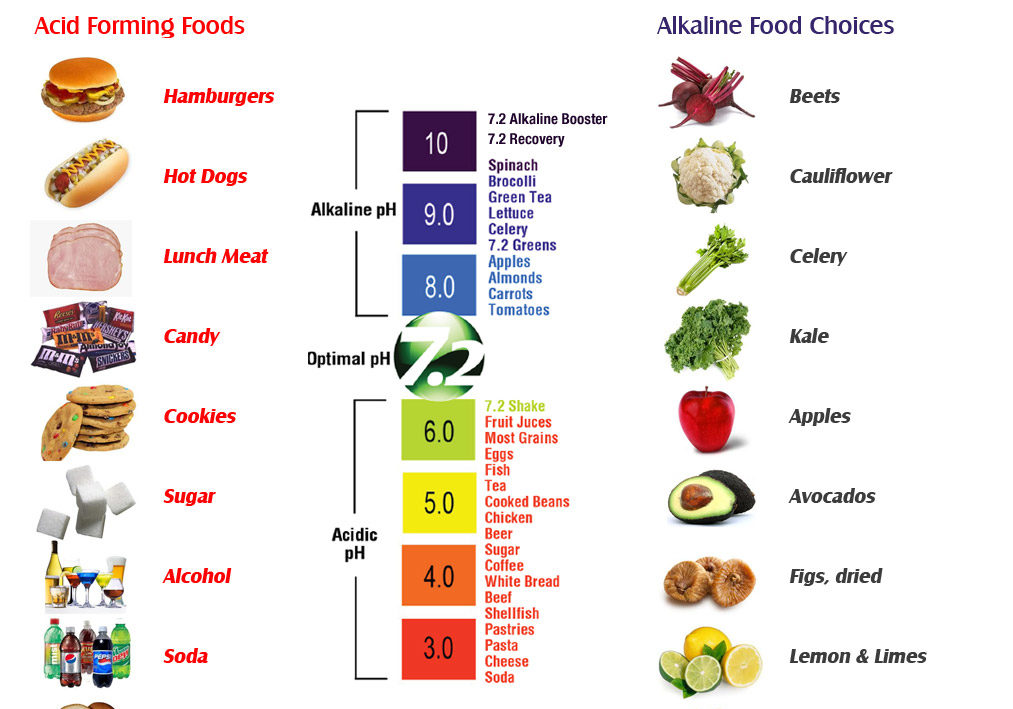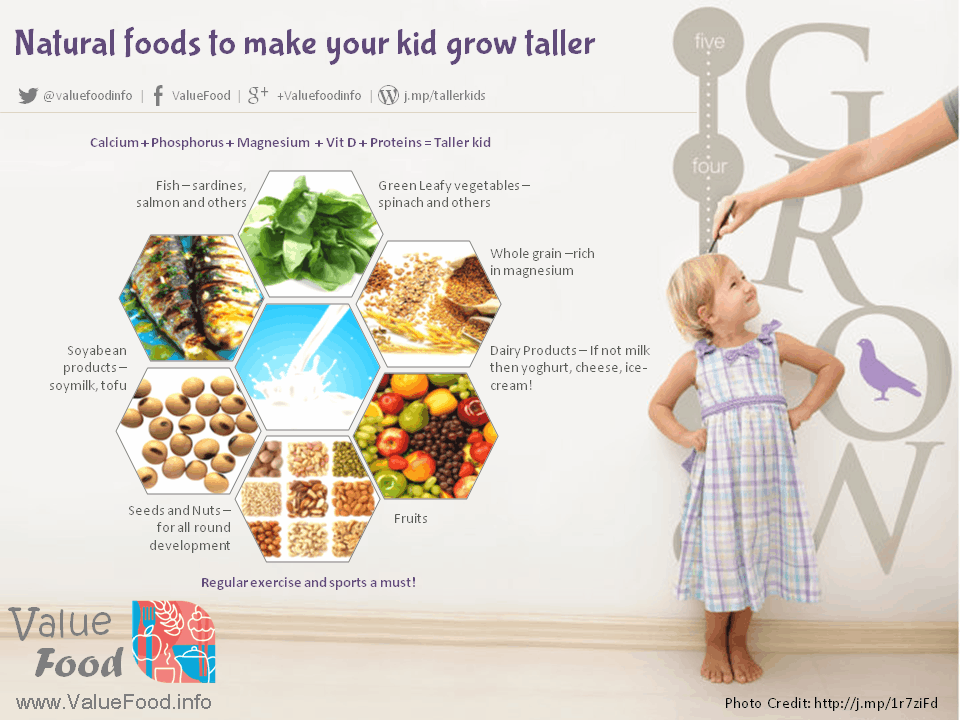When do babies start digesting food
The Development Of Your Baby's Digestive System
Previous | Next
Before baby enters the world, all of the nutrients necessary for his growth are provided by the placenta. But as soon as your new little one is born, everything changes.
Once the umbilical cord is cut and the placenta is expelled, your newborn’s digestive and excretory systems are suddenly forced to set into action. Being inexperienced in what they do, it also takes time for both systems to ramp up and function properly. This is why it is important for parents understand how immature theirbaby’s digestive system is and how they can best support it during their first few months.
Transitioning From Womb To BirthYour baby’s stomach is very small (approximately the size of a marble) and his digestive system is not accustomed to ingesting anything other than what was delivered to him through the placenta. This is why babies may lose anywhere up to 10% of their body weight in the first couple of weeks after birth.
The small size of your baby’s stomach is also why he will need frequent feedings, whether that be by formula or breastmilk. Breastmilk is biologically designed to be high in fat during the first few weeks of your baby’s life. This is to ensure that your baby receives enough calories to pack on the pounds.
Another benefit to choosing breastmilk is that your newborn baby’s pancreas is not fully developed. This means that your baby’s body produces significantly reduced levels of digestive enzymes. Breastmilk contains enzymes which help make up for this shortcoming.
After the first several days your baby’s stomach will expand to be about the same size as a ping pong ball. But he will only still be able to hold up to 60 ml at a time.
You may also find that your baby spits up frequently until he is 3 months of age or older. This is because the lower oesophageal sphincter which separates the stomach from the oesophagus is weak and immature.
The Digestive Lining IssueThe digestive system of healthy human children and adults has a layer of mucous which protects the gastrointestinal tract from microbes and other contaminants which may be present in the foods or drinks we consume.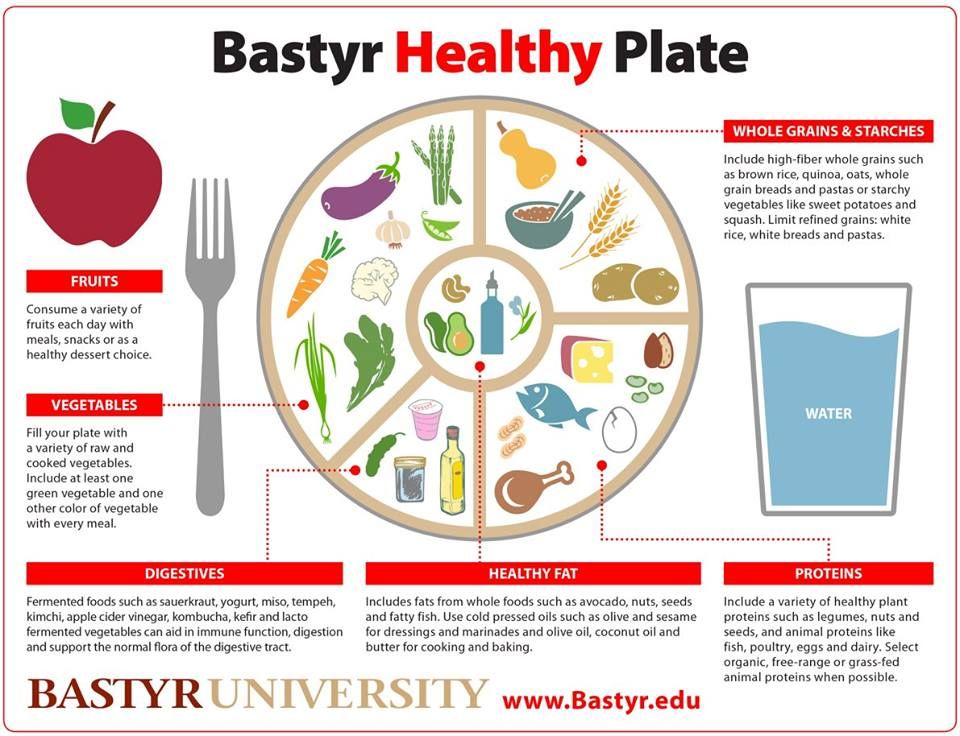 Infants have a very thin and immature barrier which puts newborns at a greater risk of infection.
Infants have a very thin and immature barrier which puts newborns at a greater risk of infection.
Fortunately, breastmilk has antibodies which help protect your bub until that digestive mucosal lining is fully mature and he is able to produce his own antibodies (this occurs at around six months of age). Studies have also shown that through breastfeeding, your baby can give your body germs so that your immune system can manufacture antibodies for that germ and help protect your baby.
As if that were not enough, breastmilk has also been shown to help engineer the gut of your baby, and it may have a long lasting impact on his health. The antibody SIgA which is found in breastmilk helps your baby set up the correct community of gut microbes. This helps keep your baby healthier now and it can result in fewer chronic illnesses as he ages.
Why You Should Avoid Solid Foods Until Six MonthsBabies may exhibit an interest in the foods you are eating at an early age, but that does not mean that you should give him a taste.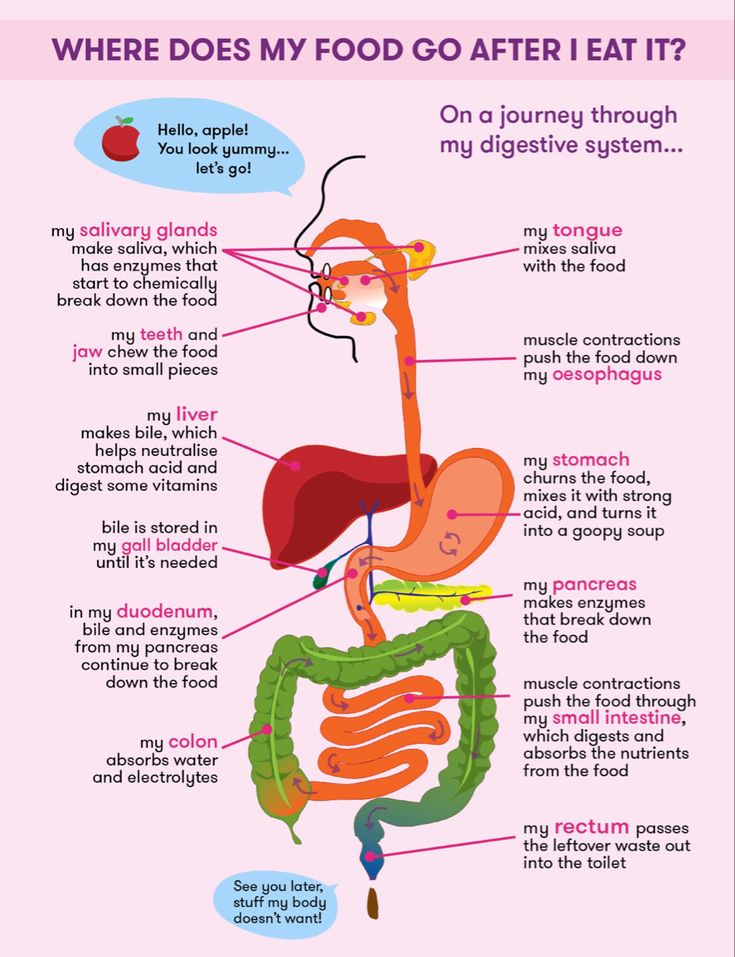 Your baby’s digestive system is not fully mature and is not ready for solid foods until he is around six months of age.
Your baby’s digestive system is not fully mature and is not ready for solid foods until he is around six months of age.
- Your baby’s body is not capable of producing sufficient levels of enzymes to digest starches until approximately six months of age
- The enzymes that digest complex carbohydrates do not reach sufficient levels until approximately seven months of age
- Bile salts and lipase (which help digest fat) do not reach full levels until between six to nine months of age
It is also important to recognise that between four to six months of age, infants have something which is known as an “open gut”. This “open gut” allows proteins to pass directly from the small intestine and into the bloodstream.
This process happens to allow antibodies from a mother’s breastmilk to enter the baby’s bloodstream. But the larger molecules from solid foods can also pass through which may cause:
- a) Allergies; and/or
- b) Illness (molecules can carry pathogens along with them)
The digestive system has a steep learning curve at birth, and it is important that we as parents help make it as easy on our little ones as possible.
One way to make it easier on new mums is to make sure that the feeding process is as easy as possible. This means:
- Offering encouraging words of support
- Making sure she is well hydrated
- Ensuring that she feels secure in her choice of feeding her baby
Peachymama is proud to support mums, both here in Australia and around the world. Our leading fashions can be found on brand new mums right through to those who are beyond the feeding phase – because our on-trend designs and mum-friendly fabrics reveal – and conceal – all the right curves.
Check out our new arrivals athttps://www.peachymama.com.au/collections/new-arrivals.
Further Reading:
https://www.livestrong.com/article/252816-infant-digestive-system-development/
https://www.ncbi.nlm.nih.gov/pmc/articles/PMC3528963/
How a Baby’s Digestive System Works, for Parents
What should a baby eat? How much and how often? When can you give a baby solids?
These are just some of the questions a parent thinks about when caring for an infant. It’s very important that babies receive adequate nutrition to grow and develop, but it can be hard to know how to feed them. It helps to understand what’s going on inside their digestive systems.
It’s very important that babies receive adequate nutrition to grow and develop, but it can be hard to know how to feed them. It helps to understand what’s going on inside their digestive systems.
The Baby Diet
Within the first few hours of life, a newborn will have his or her first meal.
“Breast milk or formula are the only two options for a baby to consume during the early months of life because a baby can’t chew and swallow solid food yet,” says Ricardo Baler, MD, UNC Health pediatrician.
If a mother is breastfeeding, she’ll notice small amounts of a protein-rich substance called colostrum coming out of the breasts first for the baby to eat. Formula-fed babies will consume about a half-ounce of formula during those early hours. From that point on, every two or three hours a newborn will consume about 2 ounces of milk, whether from breast or bottle (though you can’t measure what’s coming from the breast). As the baby continues to grow, the stomach begins to expand.
“The capacity for a baby’s stomach right at birth is about half an ounce to 1 ounce. By the end of the first week, a lot of babies are eating twice that. It’s a rapid stretch to hold more,” says Edward Pickens, MD, UNC Health pediatrician.
When it comes to feeding a baby, it’s all about following cues. Watch out for hints of hunger; hungry babies might suck on their lips or tongue, put their fingers in their mouth or cry.
The best way to confirm that a baby is eating enough is to monitor weight gain. Growth spurts typically happen when a baby is 2 to 3 weeks, 6 weeks, 3 months and 6 months old.
Starting between 4 and 6 months of age, a baby is typically ready for solids. A baby who is ready has good head and neck control, can sit with little or no support and might open his or her mouth and lean forward when food is near.
It’s important for a baby to eat a variety of foods such as fruits, vegetables, grains, yogurt, cheese and meat. Foods that can be made into a pureed form are best when introducing solids. Pediatricians recommend that parents introduce one food at a time to the baby, then wait a couple of days to try something different. This will allow time to see if the baby has any allergic reactions.
Pediatricians recommend that parents introduce one food at a time to the baby, then wait a couple of days to try something different. This will allow time to see if the baby has any allergic reactions.
“Give the baby time to explore the food in front of them. It’s great for the baby to touch the food and experience its taste,” Dr. Baler says.
At mealtime, feed solid food first and then finish with milk. Around the first birthday, food becomes the primary source of calories and milk becomes secondary.
What to Know About Baby Poop
The first bowel movement after a baby is born is meconium. This green-black, sticky lining of the intestines flakes off and collects before birth.
“It takes about 24 hours once the meconium is gone for milk to complete its course through the digestive system to eventually lead to a bowel movement,” Dr. Pickens says.
There’s a huge range of normal when looking at an infant’s stool color. Green, brown or yellow “seedy” poop is common to see in a diaper in the early months of life.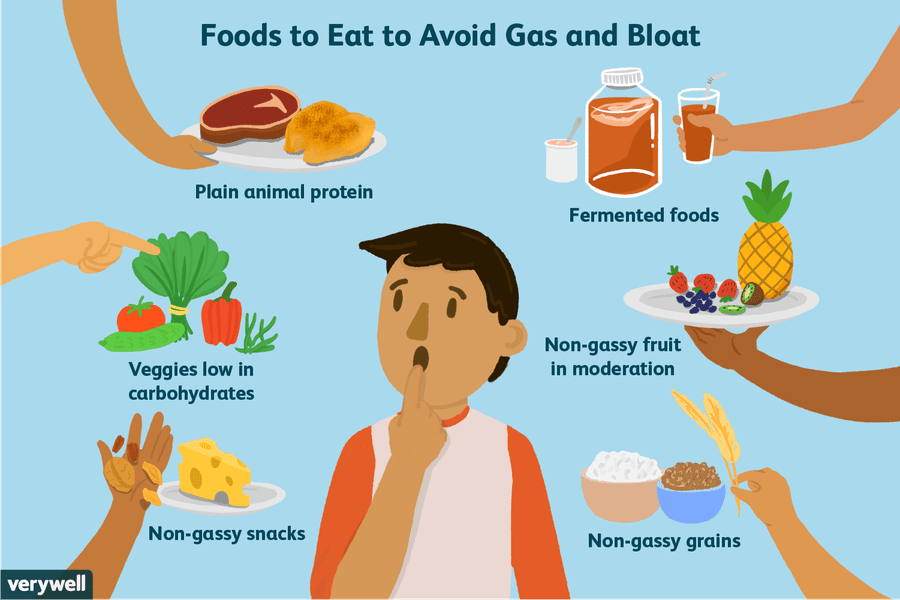 Oftentimes, the poop can be runny or of a liquid consistency, which is not a cause for concern.
Oftentimes, the poop can be runny or of a liquid consistency, which is not a cause for concern.
When a baby is born, his or her digestive system is fairly inefficient. As the baby learns to pass stool he may strain, grunt, cry or turn red in the face. As long as the stool is soft, this is not due to constipation.
A baby might experience gas while digesting milk or after swallowing air while crying. Changing the baby’s position or “bicycling” his or her legs might help, and some parents swear by an over-the-counter supplement called gripe water.
But oftentimes, there’s nothing that can be done about gas, and it’s normal and OK, Dr. Pickens says.
“There’s a certain amount of gassiness and a certain amount of fussiness that cannot easily be fixed, but it gets better in time. Newborn gassiness tends to improve after 6 to 8 weeks of age,” he says. “Be patient and trade off when you can, so no parent is ‘on duty’ all the time.”
Once you give your baby solids, the color, smell, texture and frequency of the stool changes. It will become a bit thicker with a stronger odor, and the color might depend on the food the baby ate.
It will become a bit thicker with a stronger odor, and the color might depend on the food the baby ate.
How often a baby has a bowel movement can vary as well. Bowel movements can occur multiple times a day or once every few days, and both situations are normal.
“Sometimes a baby can have a bowel movement every three or four days and they are fine. It doesn’t necessarily mean that they are constipated. If the baby is showing happy behavior, feeling well and wetting diapers, there’s no cause for concern,” Dr. Baler says. “The way the gut moves and responds to food in the digestive system changes as a baby continues to grow.”
Common Digestive System Problems in BabiesHere are some of the most common digestive problems a baby might experience in the first year of life, according to Dr. Pickens and Dr. Baler.
Colitis is when babies are exposed to a protein in their diet that causes an irritation in their intestines. For breastfed babies, these proteins are in what the mother usually drinks or eats. They are also found in formula. The usual suspects are cow’s milk, soy and eggs. Symptoms include fussiness, gassiness and blood in the stool.
They are also found in formula. The usual suspects are cow’s milk, soy and eggs. Symptoms include fussiness, gassiness and blood in the stool.
Intolerance to the mother’s diet is also fairly common in breastfed babies. If baby is gassier and fussier than normal, he or she could be having a reaction to something Mom ate.
Constipation in children can be caused by a range of problems including the use of certain medications, poor health or a lack of proper nutrition. Symptoms include hard, dry stools, straining more than normal to have a bowel movement, belly pain and bloating.
Gastroesophageal reflux disease (GERD) is when a normal behavior for babies—spitting up—comes with abnormal signs and symptoms, including poor weight gain and pain. Rarely, some babies gag and wheeze. If a baby seems happy and comfortable and is gaining weight, he or she might experience reflux (spitting up), but it doesn’t rise to the level of GERD.
Allergic reactions like a rash or hives are seen when a baby or toddler is having a reaction to something in his or her diet. The eight most common allergenic foods are milk, eggs, fish, shellfish, tree nuts, peanuts, wheat and soybeans.
If you’ve noticed your child having digestive system problems, contact your doctor or find one near you.
Digestive system of a child
Author of article Pyrieva Ekaterina Anatolievna September 15, 2021
27141 views nine0005
How does a small child eat and how does the digestive process of a newborn differ from the digestive process of an adult? How to facilitate the process of adapting the baby to complementary foods?
Our questions are answered by Pyreva Ekaterina Anatolyevna , nutritionist, candidate of medical sciences.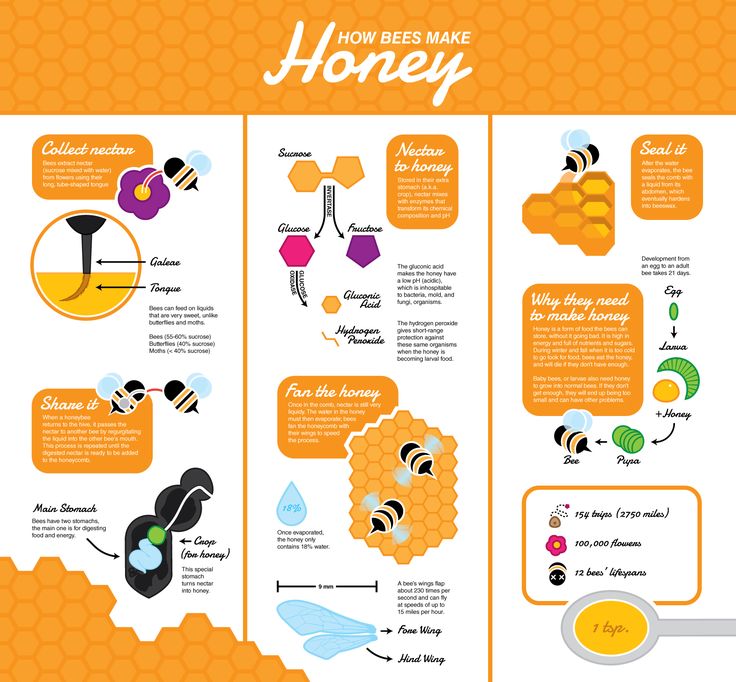
How is the process of feeding a baby during pregnancy?
Babies are introduced to nutrition long before they are born. The baby's own digestive system begins to develop very early - already at the end of the 3rd week of intrauterine development. Gradually improving, by the time of birth, it is already ready to perform its main function - to digest and assimilate food. nine0005
The fetus receives from the mother the substances necessary for its growth and development, including oxygen, proteins, fats, carbohydrates, microelements, and biologically active substances. At the same time, the baby, with the help of the mother's body, gets rid of unnecessary substances - carbon dioxide, waste products of vital activity.
All this exchange between the body of the mother and the fetus occurs through a special organ that functions only during pregnancy - the placenta. In the placenta, the blood vessels of the mother and fetus are located close to each other and in such a way that exchange of substances easily takes place between them. nine0005
nine0005
Features of the digestive system of a newborn
But then the baby was born, and everything changed. Now the baby's nutritional processes are not connected with the mother's placenta, and the newborn needs to adapt to new, unusual conditions for him.
The digestive system of a newborn differs from the digestive system of an adult in immaturity and the ability to digest and assimilate so far only one product - breast milk (or milk mixtures close to it in composition). Does the child have enough food, how adequate is the feeding regimen, whether the mother has mastered breastfeeding techniques correctly - all this should be assessed by the doctor who observes the baby. A nursing mother should talk to a doctor about the features of her diet, as improper nutrition of a nursing woman can harm her baby. nine0005
The immaturity of the digestive system of the newborn is manifested in increased permeability of the intestinal mucosa, insufficiency of digestive enzymes, incoordination of the motor activity of the intestine, as well as the absence of teeth and the imperfection of the processes of swallowing (solid food) and chewing.
Digestive problems in a newborn baby
Parents often worry when faced with so-called functional - that is, temporary, not associated with any pathology - digestive disorders in babies. These include colic, regurgitation, constipation, bloating. In children of the first months of life, these disorders occur precisely in connection with the immaturity of the digestive and nervous systems and their adaptation to extrauterine life. The baby's digestive system, as it were, "learns" to accept, digest and assimilate food. Usually, all these problems go away by themselves by the age of 3-4 months - as the baby's gastrointestinal tract matures and adapts. nine0005
However, even if the baby's digestive disorders are similar to functional ones, when they appear, it is imperative to show the child to the doctor. There are frequent situations when colic, regurgitation or constipation not only does not go away, but also intensifies, and additional symptoms are added to them.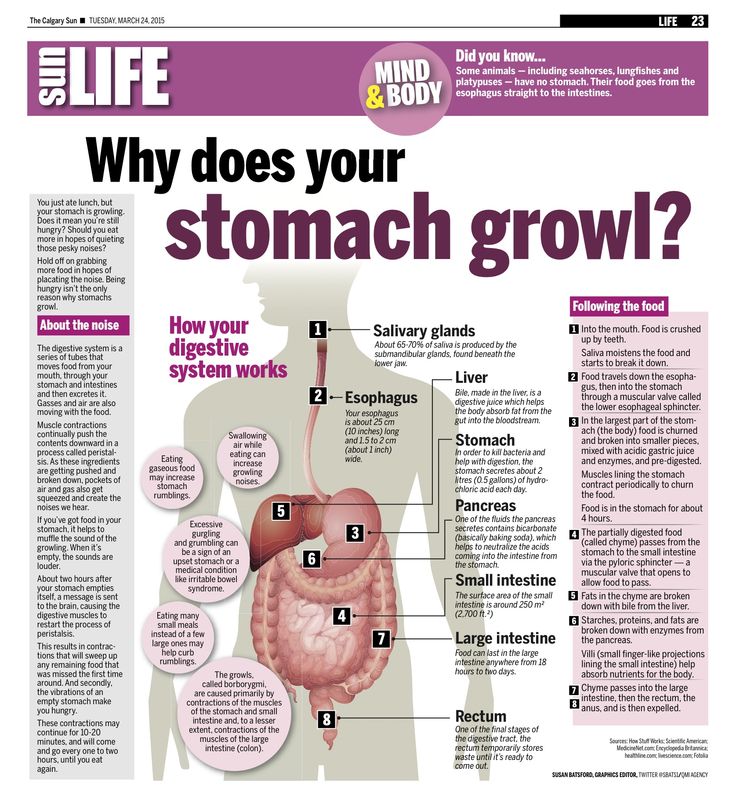 Most often this happens with food allergies in a child, which can only be diagnosed by a doctor.
Most often this happens with food allergies in a child, which can only be diagnosed by a doctor.
How do you know if your baby is ready for complementary foods?
The scheme and timing of the introduction of complementary foods should be discussed with the doctor who observes the child and knows his individual characteristics of development and health. The timing of the introduction of complementary foods varies from the age of 4 months to the age of 6 months - it is during this time period that the maturation of the child's digestive system occurs. The signs of the child's readiness for the introduction of complementary foods are determined by the doctor. nine0005
What does the term “common table” imply?
When does a child's digestive system become similar to that of an adult - and what does the concept of "transfer to a common table" imply?
The concept of "adult" food or "common table" for a young child implies only a gradual decrease in the degree of grinding of complementary foods and some expansion of the menu.
But we are by no means talking about the fact that now potentially allergenic or difficult-to-digest foods should be introduced into the child’s menu. Fried potatoes, fast food, fried borscht, shrimp and exotic fruits that are not typical for our band - all this is not suitable for the nutrition of young children. If you want to add any new foods to your baby's diet, be sure to talk about it with your baby's doctor. nine0005
Enjoy your meal!
Author of the article Pyrieva Ekaterina Anatolievna
Nutritionist, Candidate of Medical Sciences
All expert articles
The diet of a child aged 4 - 6 months
Your baby is already 4 months old. He has noticeably grown up, become more active, is interested in objects that fall into his field of vision, carefully examines and reaches for them.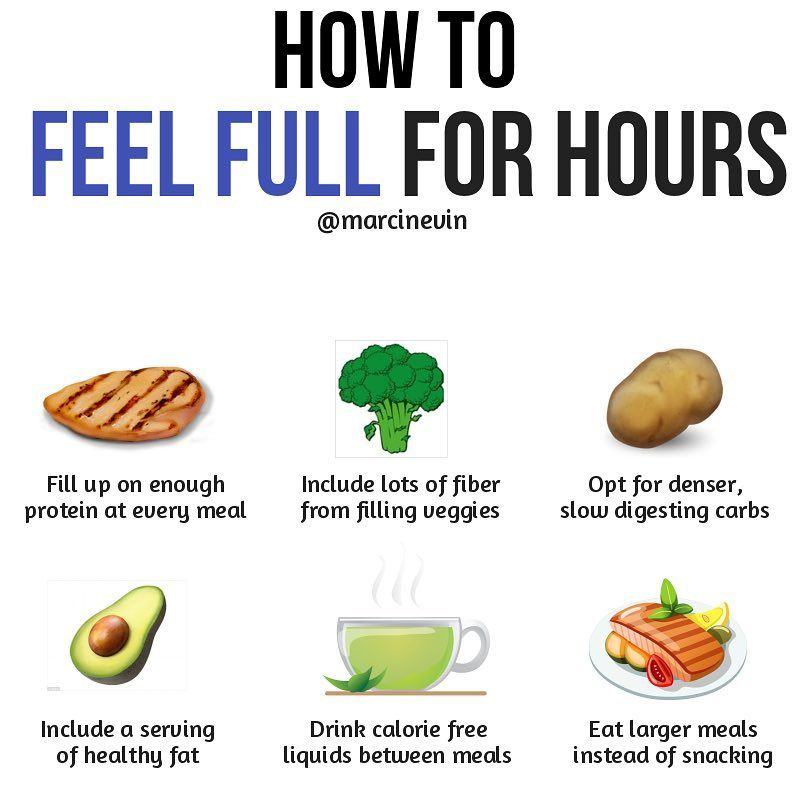 The emotional reactions of the child have become much richer: he joyfully smiles at all the people whom he often sees more and more often, makes various sounds. nine0005
The emotional reactions of the child have become much richer: he joyfully smiles at all the people whom he often sees more and more often, makes various sounds. nine0005
You are still breastfeeding or have had to switch to formula or formula feeding. The child is actively growing, and only with breast milk or infant formula, he can no longer always get all the necessary nutrients. And that means it's time to think about complementary foods.
The optimal time to start its introduction is between 4 and 6 months, regardless of whether the baby is receiving breast milk or formula. This is the time when children respond best to new foods. Up to 4 months, the child is not yet ready to perceive and digest any other food. And with the late introduction of complementary foods - after 6 months, children already have significant deficiencies of individual nutrients and, first of all, micronutrients (minerals, vitamins, long-chain polyunsaturated fatty acids, etc.). In addition, toddlers at this age often refuse new foods, they have delayed development of chewing skills for thick foods, and inadequate eating habits are formed. It is important to know that, no matter how strange it may seem at first glance, with a delayed appointment of complementary foods, allergic reactions more often occur on them. nine0005
It is important to know that, no matter how strange it may seem at first glance, with a delayed appointment of complementary foods, allergic reactions more often occur on them. nine0005
When is it advisable to introduce complementary foods as early as 4 months, and when can you wait until 5.5 or even 6 months? To resolve this issue, be sure to consult a pediatrician.
As a rule, at an earlier age (4 - 4.5 months), complementary foods are introduced to children at risk of developing iron deficiency anemia, as well as children with insufficient weight gain and with functional digestive disorders.
The optimal time to start introducing complementary foods to a healthy baby is between 5 and 5.5 months of age. nine0005
The World Health Organization recommends that breastfed babies should be introduced to complementary foods from 6 months of age. From the point of view of domestic pediatricians, which is based on extensive practical experience and scientific research, this is possible only in cases where the child was born on time, without malnutrition (since in these cases the mineral reserves are very small), he is healthy, grows well and develops. In addition, the mother should also be healthy, eat well and use either specialized enriched foods for pregnant and lactating women, or vitamin and mineral complexes in courses. Such restrictions are associated with the depletion of iron stores even in a completely healthy child by 5-5.5 months of age and a significant increase in the risk of anemia in the absence of complementary foods rich or fortified with iron. There are other deficits as well. nine0005
In addition, the mother should also be healthy, eat well and use either specialized enriched foods for pregnant and lactating women, or vitamin and mineral complexes in courses. Such restrictions are associated with the depletion of iron stores even in a completely healthy child by 5-5.5 months of age and a significant increase in the risk of anemia in the absence of complementary foods rich or fortified with iron. There are other deficits as well. nine0005
The first complementary food can be vegetable puree or porridge, it is better to give fruit puree to the baby later - after tasty sweet fruits, children usually eat vegetable puree and cereals worse, often refuse them altogether.
Where is the best place to start? In cases where the child has a tendency to constipation or he puts on weight too quickly, preference should be given to vegetables. With a high probability of developing anemia, unstable stools and small weight gains - from baby cereals enriched with micronutrients.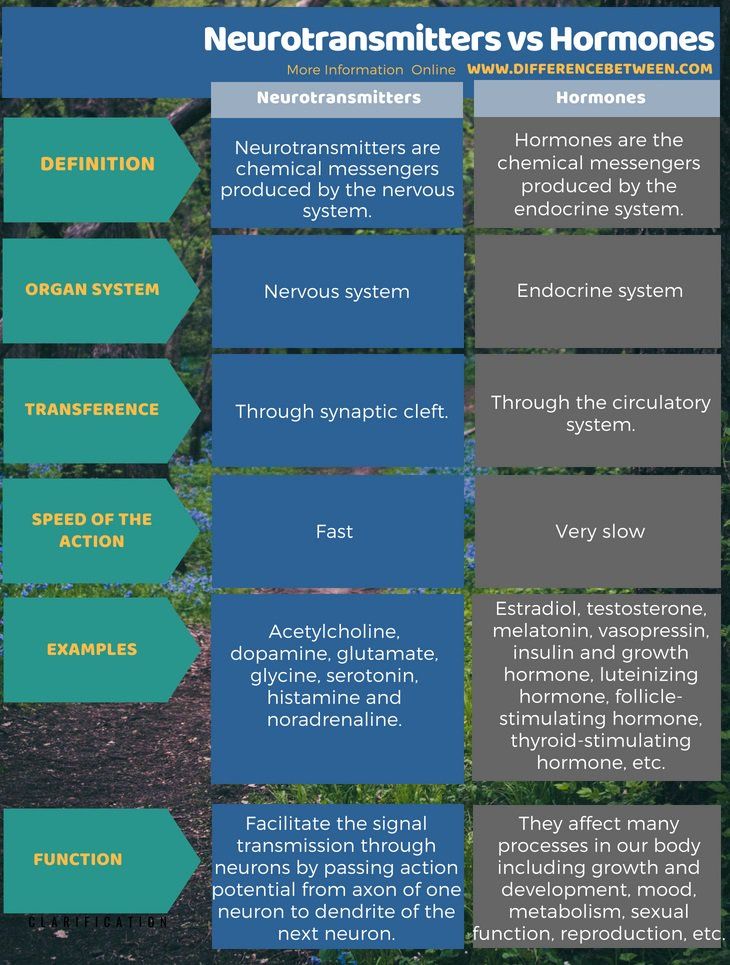 And if you started introducing complementary foods with cereals, then the second product will be vegetables and vice versa. nine0005
And if you started introducing complementary foods with cereals, then the second product will be vegetables and vice versa. nine0005
If the first complementary foods are introduced at 6 months, it must be baby porridge enriched with iron and other minerals and vitamins, the intake of which with breast milk is no longer enough.
Another important complementary food product is mashed meat. It contains iron, which is easily absorbed. And adding meat to vegetables improves the absorption of iron from them. It is advisable to introduce meat puree to a child at the age of 6 months. Only the daily use of children's enriched porridge and meat puree can satisfy the needs of babies in iron, zinc and other micronutrients. nine0005
But it is better to introduce juices later, when the child already receives the main complementary foods - vegetables, cereals, meat and fruits. After all, complementary foods are needed so that the baby receives all the substances necessary for growth and development, and there are very few in their juices, including vitamins and minerals.
Juices should not be given between feedings, but after the child has eaten porridge or vegetables with meat puree, as well as for an afternoon snack. The habit of drinking juice between meals leads to frequent snacking in the future, a love of sweets is instilled, children have more tooth decay and an increased risk of obesity. nine0005
With the start of the introduction of complementary foods, the child is gradually transferred to a 5-time feeding regimen.
Rules for the introduction of complementary foods:
- preference should be given to baby products of industrial production, they are made from environmentally friendly raw materials, have a guaranteed composition and degree of grinding
- Complementary foods should be offered to the baby by spoon at the start of feeding, before breastfeeding (formula feeding)
- the volume of the product increases gradually, starting with ½ - 1 spoon, and in 7 - 10 days we bring it to the age norm, subsequent products within the same group (cereals from other cereals or new vegetables)
- can be entered faster, in 5 - 7 days
- start introduction with monocomponent products
- it is undesirable to give a new product in the afternoon, it is important to follow how the child reacts to it
- new products are not introduced in the event of acute illness, and before and immediately after prophylactic vaccination (should be abstained for several days)
When introducing a new type of complementary food, first try one product, gradually increasing its amount, and then gradually "dilute" this product with a new one. For example, vegetable complementary foods can be started with a teaspoon of zucchini puree. During the week, give the baby only this product, gradually increasing its volume. After a week, add a teaspoon of mashed broccoli or cauliflower to the zucchini puree and continue to increase the total volume every day. Vegetable puree from three types of vegetables will be optimal. The portion should correspond to the age norm. Over time, you can replace the introduced vegetables with others faster. nine0005
For example, vegetable complementary foods can be started with a teaspoon of zucchini puree. During the week, give the baby only this product, gradually increasing its volume. After a week, add a teaspoon of mashed broccoli or cauliflower to the zucchini puree and continue to increase the total volume every day. Vegetable puree from three types of vegetables will be optimal. The portion should correspond to the age norm. Over time, you can replace the introduced vegetables with others faster. nine0005
After the introduction of one vegetable (bringing its volume to the required amount), you can proceed to the intake of porridge, and diversify the vegetable diet later.
If the child did not like the dish, for example, broccoli, do not give up on your plan and continue to offer this vegetable in a small amount - 1-2 spoons daily, you can not even once, but 2-3 times before meals, and after 7 - 10, and sometimes 15 days, the baby will get used to the new taste. This diversifies the diet, will help to form the right taste habits in the baby.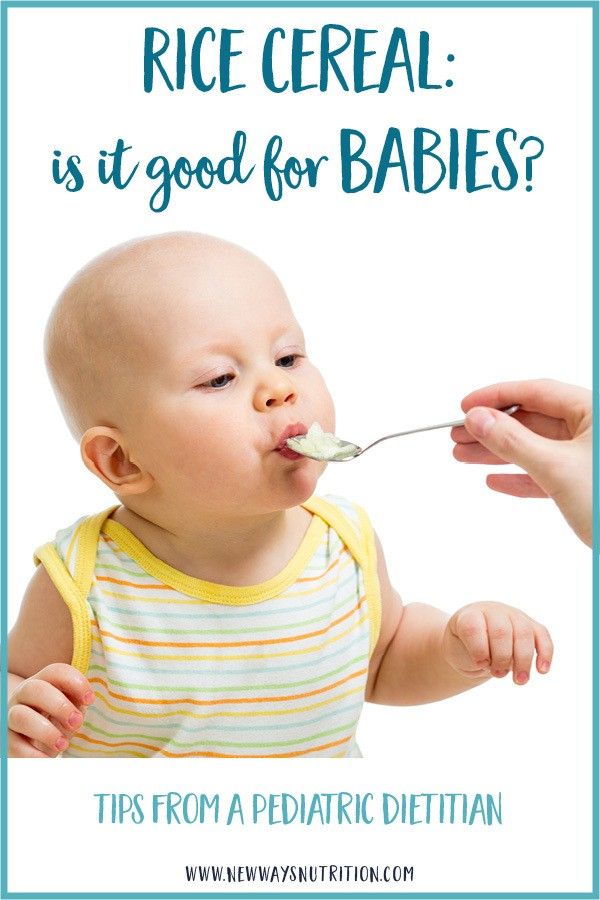 nine0005
nine0005
Spoon-feeding should be done with patience and care. Forced feeding is unacceptable!
In the diet of healthy children, porridge, as a rule, is introduced after vegetables (with the exception of healthy children who are breastfed, when complementary foods are introduced from 6 months). It is better to start with dairy-free gluten-free cereals - buckwheat, corn, rice. At the same time, it is important to use porridge for baby food of industrial production, which contains a complex of vitamins and minerals. In addition, it is already ready for use, you just need to dilute it with breast milk or the mixture that the baby receives. nine0005
Children suffering from food allergies are introduced complementary foods at 5-5.5 months. The rules for the introduction of products are the same as for healthy children, in all cases it is introduced slowly and begins with hypoallergenic products. Be sure to take into account individual tolerance. The difference is only in the correction of the diet, taking into account the identified allergens.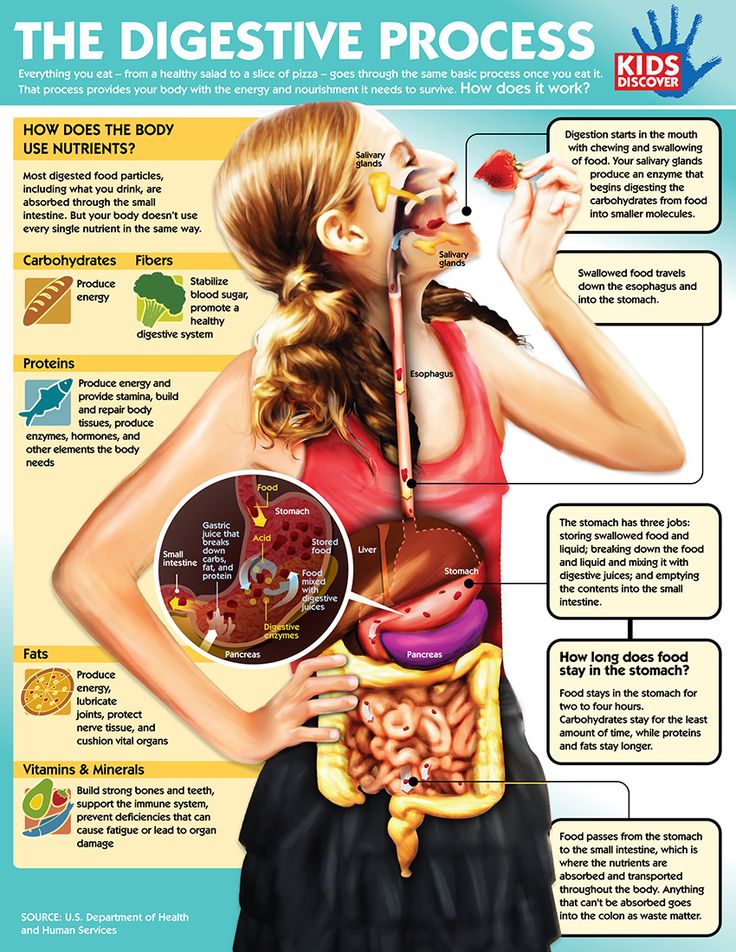 From meat products, preference should first be given to mashed turkey and rabbit.
From meat products, preference should first be given to mashed turkey and rabbit.
Diets for different age periods
Explain how you can make a diet, it is better to use a few examples that will help you navigate in compiling a menu specifically for your child.
From 5 months, the volume of one feeding is on average 200 ml.
Option 1.
If your baby started to receive complementary foods from 4-5 months, then at 6 months his diet should look like this:
| Breast milk or VHI* | 200 ml | |
| II feeding 10 hours | Dairy-free porridge** Supplementation with breast milk or VHI* | 150 g 50 ml |
| III feeding 14 hours | Vegetable puree Meat puree Vegetable oil Supplemental breast milk or VHI* | 150 g 5 - 30 g 1 tsp 30 ml |
| IV feeding 18 hours | Fruit puree Breast milk or VHI* | 60 g 140 ml |
| V feeding 22 hours | Breast milk or VHI* | 200 ml |
* - infant formula
** - diluted with breast milk or VHI
Option 2.
* - infant formula Option 3. : ** - diluted with breast milk Up to 7 months, increase the volume of porridge and vegetable puree to 150 g and introduce fruit puree. I feeding
6 hours Breast milk or VHI* 200 ml II feeding
10 hours Dairy-free porridge**
Fruit puree 150 g
20 g III feeding
14 hours Vegetable puree
Meat puree Vegetable oil
Fruit juice 150 g
5 - 30 g
1 tsp
60 ml IV feeding
18 hours Fruit puree
Breast milk or VHI* 40 g
140 ml V feeding
22 hours Breast milk or VHI* 200 ml
** - diluted with breast milk or VHI 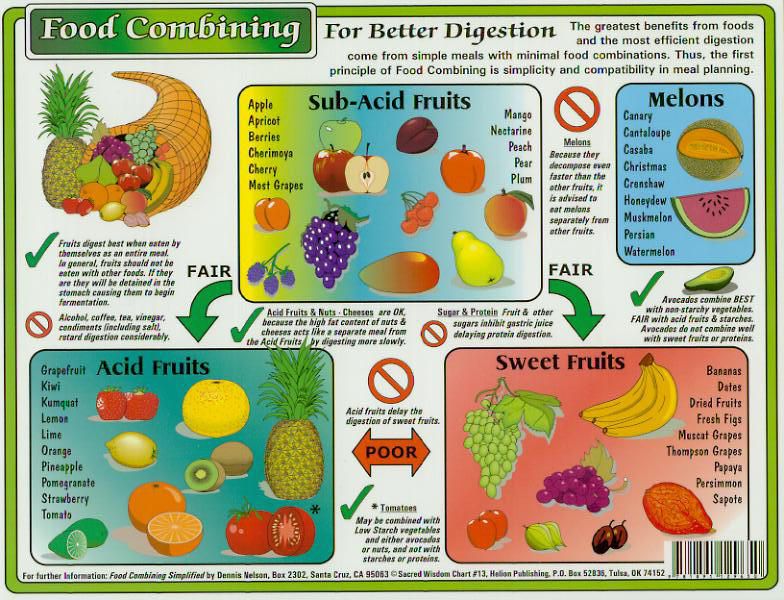
I feeding
6 hours Breast milk II feeding
10 hours Dairy-free porridge**
Breast milk supplement 100 g III feeding
14 hours Vegetable puree
Meat puree Vegetable oil
Breast milk supplement 100 g
5 - 30 g
1 tsp IV feeding
18 hours Breast milk V feeding
22 hours Breast milk 